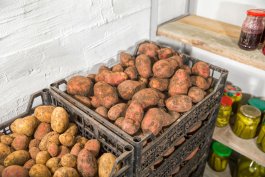
The goal of a Freedom Garden is to be able to store and share the food you’re growing, so getting good at storing and preserving your fruits and veggies should be top of mind.
There are several methods for storing food without refrigeration and each method comes with its own set of instructions and best practices. Here are some food preservation tips for each kind of method, and if you haven’t watched it already, here’s my video guide on pickling, and also on the best veggies you can preserve.
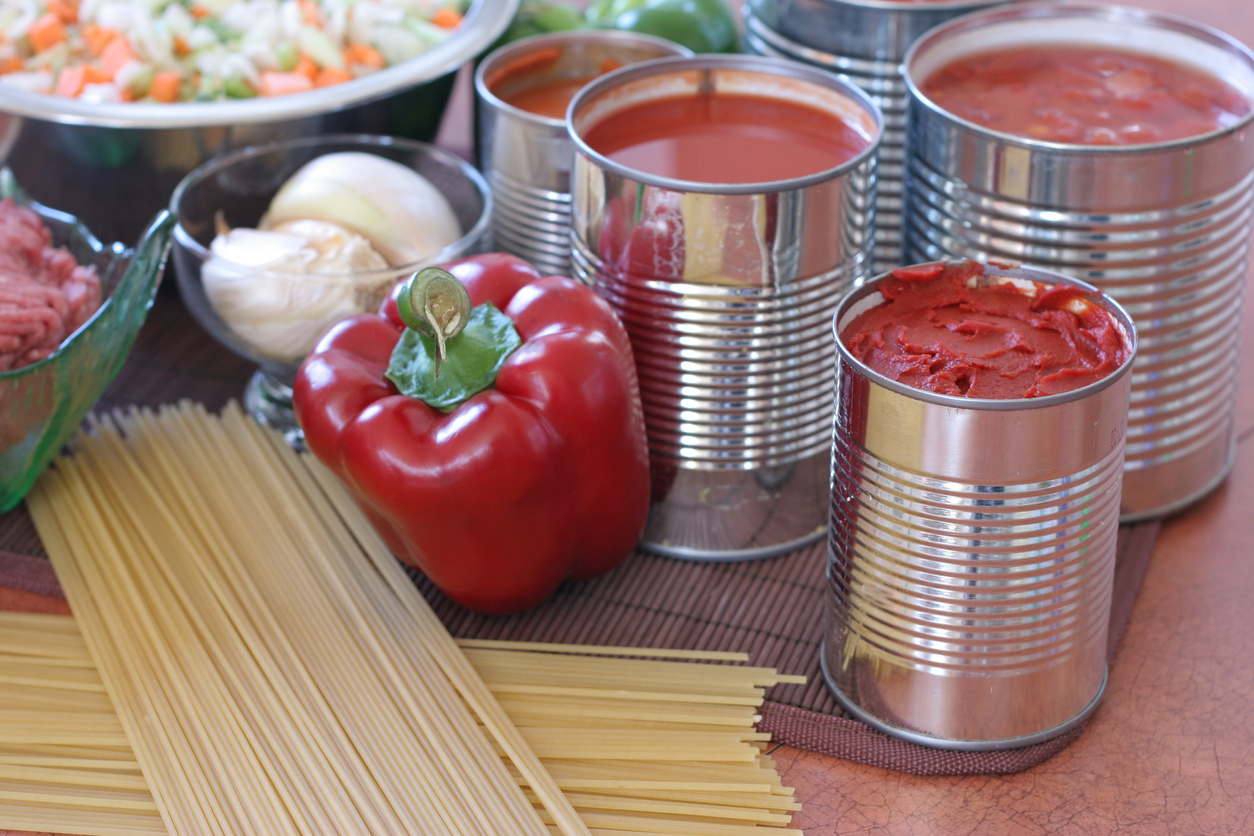
Canning Tips
Canned foods last a long time as long as they’re canned appropriately. Follow the tips below, but also make sure you’re following specific time-tested recipes for all of your canned foods like the ones you can get from the manufacturer or Ball jars.
Use the right sterile supplies. When storing food without refrigeration via the canning method, only use cans, lids, and materials that are intended for canning vegetables. Be sure they are clean and sterile before and during use.
Read your canning instructions carefully. Follow instructions that come with your canning tools. Use proven recipes and don’t deviate from them. The USDA has an extensive “Complete Guide to Home Canning” covering everything from tomatoes to vegetables to fruits and even meats and seafood. There is a lot of information in the guide that’s well worth looking through if you’re thinking about canning.
Use additives like lemon juice or citric acid. Adding lemon juice or citric acid will increase the acidity in your jars which will make them safer for longer-term storage. As previously stated, you should always follow reputable canning recipes.
Here are some of great fruits and vegetables that are popular canned as a preservation method:
- Asparagus. Wash and trim your asparagus. Can it in pieces or in spears.
- Beets. Trim the tops and leaving some stem and roots. Boil to remove the skins. Can beets whole or cut in half or quarters for larger beets.
- Carrots. Wash ’em, peel ’em, slice ’em or dice ’em.
- Corn. Cut the kernels from the cob, making sure not to scrape the cob.
- Cucumbers. Cucumbers are among the classic best vegetables for canning. Use them as they are or make pickles!
- Green beans. Another classic. You can leave them raw to can them. Clip off the ends and can them as they are, or cut them into one-inch pieces.
- Okra. Wash the pods, trim the ends, and leave whole or cut into one-inch pieces.
- Peaches. In-season peaches are delicious peeled and canned.
- Peppers. Blister or boil peppers so you can remove the skins. Leave small peppers whole and cut large ones in half.
- Tomatoes. Canning tomatoes is a major joy in the life of most gardeners, there are jellies, sauces and salsas, stewed tomatoes, crushed tomatoes, and tomato soups! Ripe tomatoes last 12-18 months canned. Whatever you do, follow the instructions exactly on your tomato canning recipes, as tomatoes need tried-and-true canning techniques to stay safe to eat over long periods. For all canned foods, store jars at 50° to 70°F and never above 95°F.
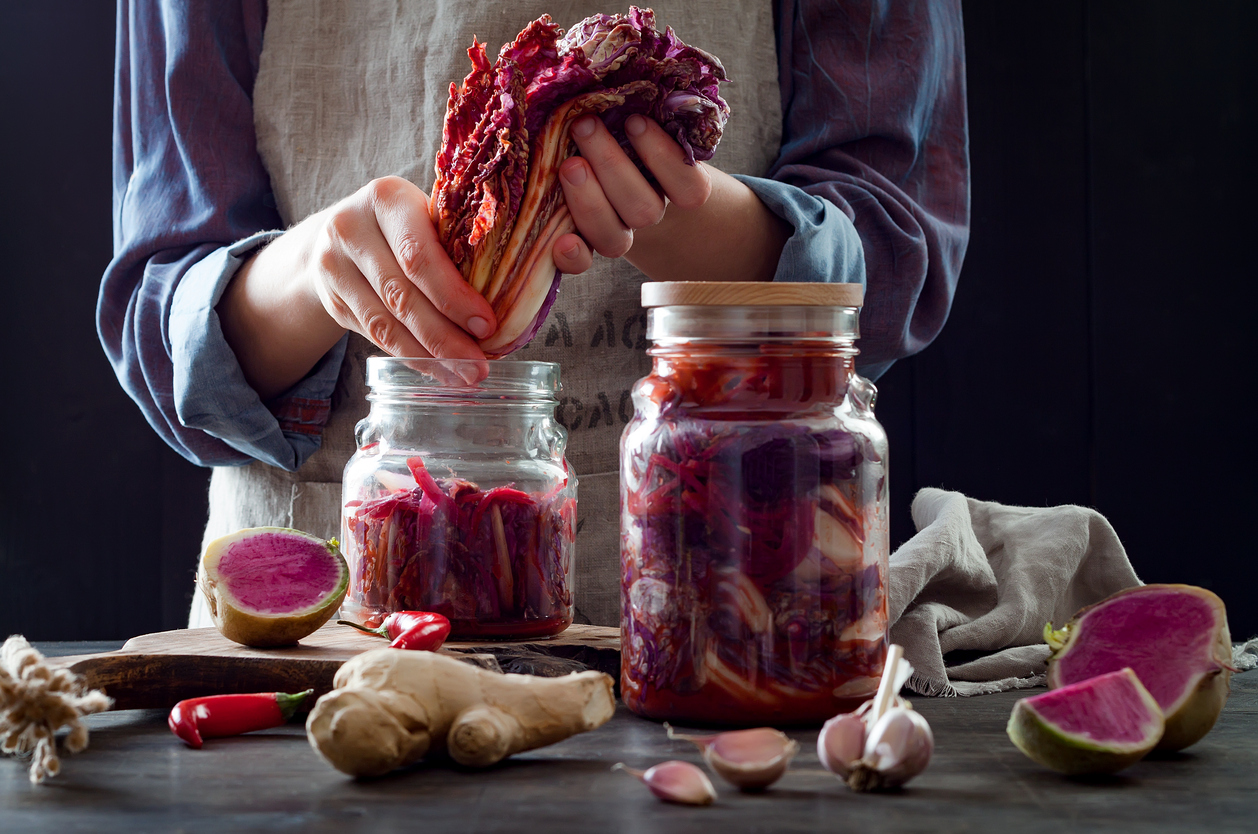
Fermenting Tips
Pickling veggies is another wonderful way to keep food preserved longer, and they’re also ready for eating. Making pickles and pickled carrots or onions will be appreciated as gifts by anyone you hand them out to.
Use filtered, non-chlorinated water. Depending on your recipe you may need to use non-chlorinated water or whey.
Keep all vegetables submerged under the brine. It’s important to keep all vegetables submerged in your brining solution in order to safely ferment each piece of food.
Use a digital scale. Using a digital scale helps measure ingredients more carefully which can affect the success of your fermentation. Measuring your salt and ingredients precisely gives you peace of mind knowing that your salinity is correct.
Pick the best varietals. For example, cucumbers can last 1-9 months after fermenting. If you plan to pickle your cucumbers, plant varieties like the Boston Pickling Cucumber, the National Pickling Cucumber, the Bush Pickle, and any English or Persian cucumber variety with thin skin. For pickling purposes, you may also want to plant green beans to make dilly beans. Carrots, red onions and radishes are also delicious pickled and fermented!
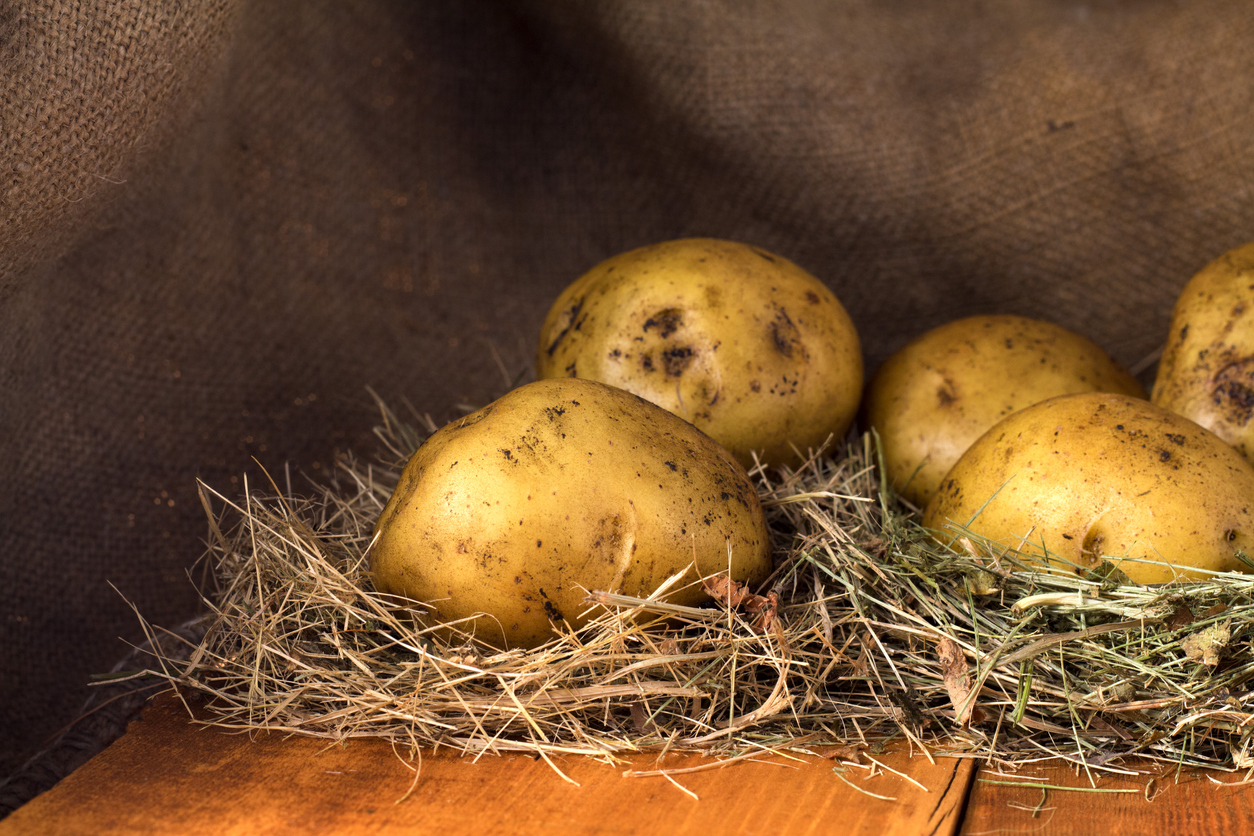
Storage / Root Cellar Tips
A cool basement or root cellar is an ideal place to store root veggies and some fruits like apples over the winter. You can get a long shelf life with an adequately humidified basement or root cellar.
Clean out your storage area thoroughly at least once a year. When storing food without refrigeration in a root cellar, sanitize your space regularly to make sure mold and mildew don’t form. Protect your stored produce by making sure the shelves, baskets, and bins are free from bacteria and debris.
Ensure good ventilation. Some vegetables and fruit give off ethylene gas that can cause other produce to spoil if not enough fresh air circulates throughout the cellar.
Keep light to a minimum. If your root cellar has a window, cover it to prevent sunlight from causing sprouting of your root vegetables.
Below are some of the best vegetables for storing in cellars:
- Carrots – (7-9 months) After digging up your carrots, don’t wash them, simply brush the dirt off, and allow them to layout for a day or two to dry. Then, store them upright in peat moss or sawdust in a box in a basement or root cellar that’s around 32°-38°F. Make sure they’re not laying on top of or touching one another. You can also simply keep your carrots in the ground until you’re ready but plan to harvest them before the ground freezes. Many people plant for spring carrots, however, spring carrots need to be consumed quickly, they can’t be stored. Carrots are also great for pickling!
- Onions and Garlic – (up to 12 months) Onions, like garlic, need to dry and cure before being stored. You can harvest onions all summer, but once the greens flop over and die, they’re done growing. Pull your onions and garlic up out of the ground and lay them out in a dry spot or hang them over a railing with an ideal temp of about 75 degrees. Once the skins are withered and the necks are hard (about two weeks), they’re ready to store. Trim any greens down to 1″ and toss any that are bruised or damaged. Store in mesh bags or bushels (breathability is key). Or, let your greens dry out and try your hand at onion braiding. Big strong-scented onions that have been dried out for 2-4 weeks can last up to a year in a cool basement. Otherwise, eat within a few weeks. Onions are also delicious pickled!
- Squash – (1-6 months) Storing squash in a cool, dry place is the easiest way to keep it. It doesn’t need cooking or special care; it can be stored where you would normally store potatoes and onions. Place the squash in a single layer with plenty of air space between each piece of fruit, ideally somewhere around 50-55 degrees Fahrenheit (10-13 degrees Celsius). One of the easiest ways to do this is to place them on a basement or cellar floor or shelf. It is best, however, to check first for moisture build-up and mildew on the floor; if there is either problem, wooden shelves will work better.
- Potatoes – (5-10 months) The University of Idaho, which I’d gather knows a bit about spuds, says potatoes are best stored at temperatures of 42-55°F and 80-90% humidity. Now you probably understand why some people still have root cellars. If these conditions cannot be met then it is best to keep potatoes in the refrigerator or on the countertop and eat them within a few weeks. Potatoes should be stored away from onions and apples as they release a gas that causes potatoes to rot more quickly. Any kind of plastic bag or container can be used for storage as long as it is breathable. Many people have had success with storing potatoes in a potato bag purchased from the store. Old pillowcases are not recommended as they do not breathe and can cause potatoes to rot, but you can also store them on a shelf in a cool basement on some hay.
- Apples – (1-5 months) My favorite way to preserve apples is through apple sauce, apple jam, and apple preserves. But if you want to keep your apples whole, you can wrap each of your apples in craft paper or newspaper and store in a box in a cellar that is 35-40°F. Don’t pack any apples that are bruised, or they can rot the whole box. The paper should help them from spreading any rot but look at the box often for signs of any rotting apples and promptly remove them. Apples are also delicious when dried!
- Green Tomatoes – (1-2 months) This one is more of a fun fact. Once the fall comes along and you know frost is on the way, you can cut all your green tomatoes off the vines and let them ripen indoors. You can lay them upside down on their heads near a window or hang them! They can take up to two months to ripen indoors, but they almost always do, so you can get summer tomatoes deep into fall, even in colder climates! The sun isn’t necessary either, but warmth is. The warmer the room, the quicker the tomato will ripen, so if you want them to last longer, place them in a cooler area.
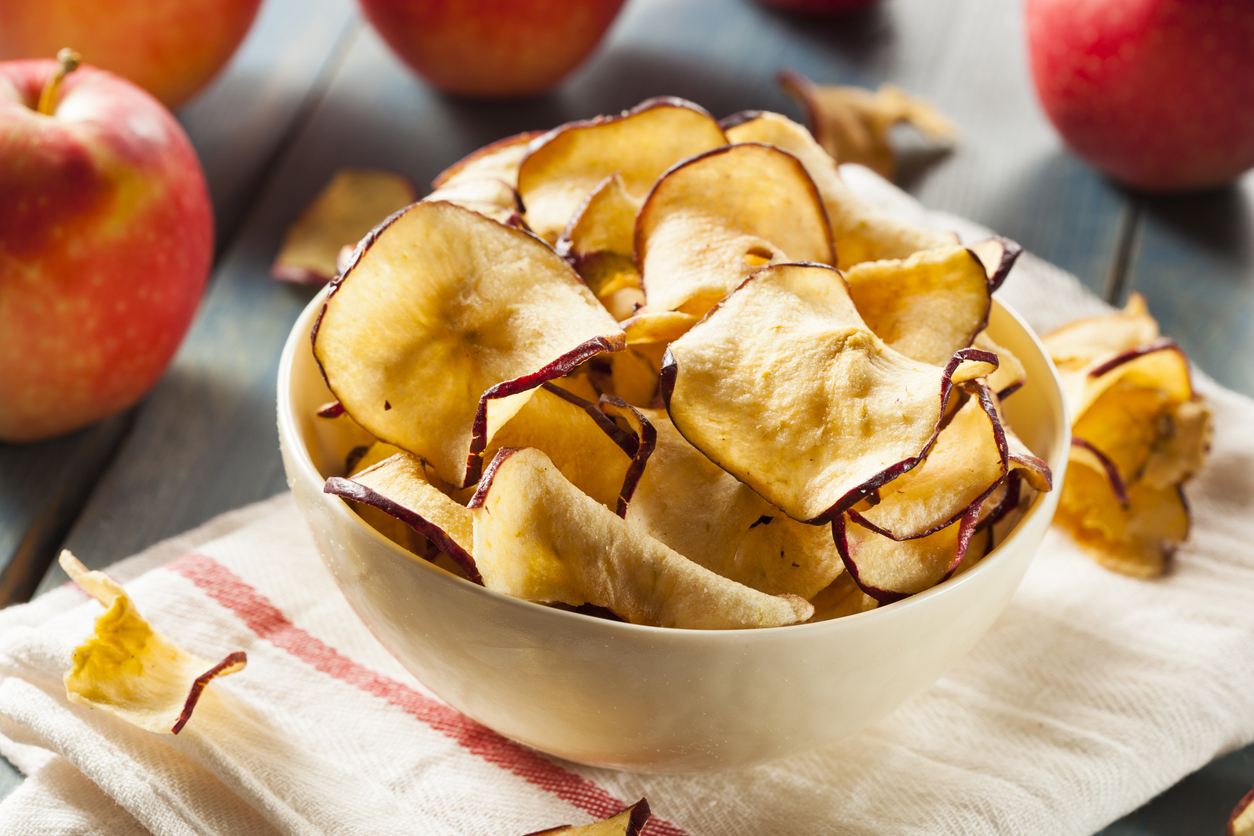
Dehydration Tips
Dehydration has a shorter expiration than the other methods of preservation—generally 1 week or up to 4 if you also vacuum seal—but you can make a lot of goodies with dehydrated fruits and vegetables like vegetable chips and apple crackers.
Be sure your fruits and veggies are fully dry. Dehydrating is a great method for storing food without refrigeration. Don’t remove fruits and vegetables from the dehydrator until they are fully dry. Dehydrated produce should be hard and crunchy and not soft and spongy. The goal is to remove at least 95% of the moisture.
Prepare your produce effectively. Wash produce with an antibacterial vegetable wash to remove any bacteria or chemicals from the exterior of your produce. With fruit like bananas and apples, spray lemon juice on the slices before dehydrating to prevent browning.
Pay attention to your temperature. Different types of produce require different temperatures and drying times. Don’t think that you can speed up the dehydration process by raising the temperature. You may end up cooking the vegetables or fruits which will compromise the texture and long-term storage.
Consider sun-drying. For another idea, try hanging your tomatoes out to dry, or laying them out in the sun for sun-dried tomatoes!
General Storage Tips
Don’t wash produce that is being stored whole. When storing whole vegetables like root vegetables, squash, and gourds, don’t wash the exterior. Washing vegetables like these will introduce moisture which can speed up rot and encourage mildew.
No airtight containers. Airtight containers prevent air from circulating which can contribute to early rot.
Remove rotten fruits and veggies. Check on your fruits and vegetables regularly and remove fruits and vegetables that show signs of rot.
Freeze. Freezing is a wonderful way to store many fruits and vegetables. Delicate plants like eggplant don’t keep as well as, say, onions, but most things can be stored for at least a short amount of time in te freezer.
Make jam. Jam is one of the best ways to store fruits. The sugar in the jam will preserve foods for a long time, and some herbs like garlic can even be preserved in honey like a jam due to the antibacterial properties.
Start Your Freedom Garden

There’s no big fancy poster here to kick you off on your freedom garden journey, but we’re happy to help you along the way. If you have any more questions about growing a Freedom Garden, please leave a comment and let us know.


 Previous
Previous
